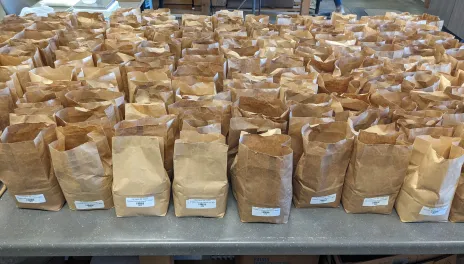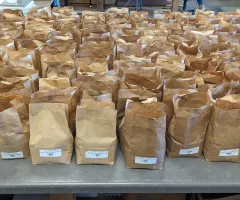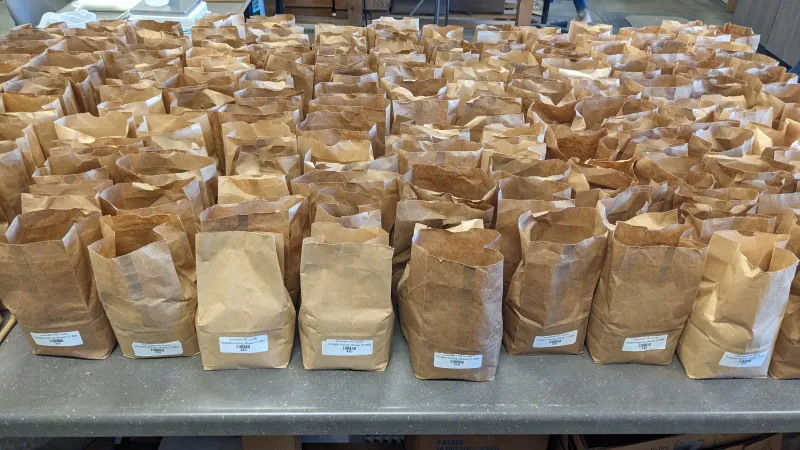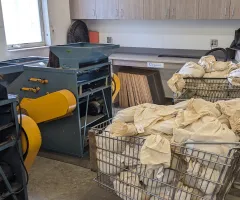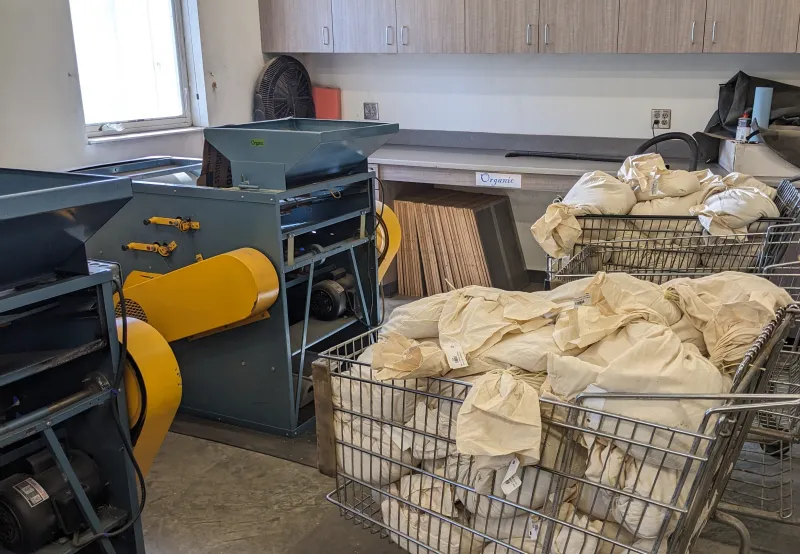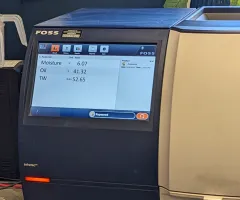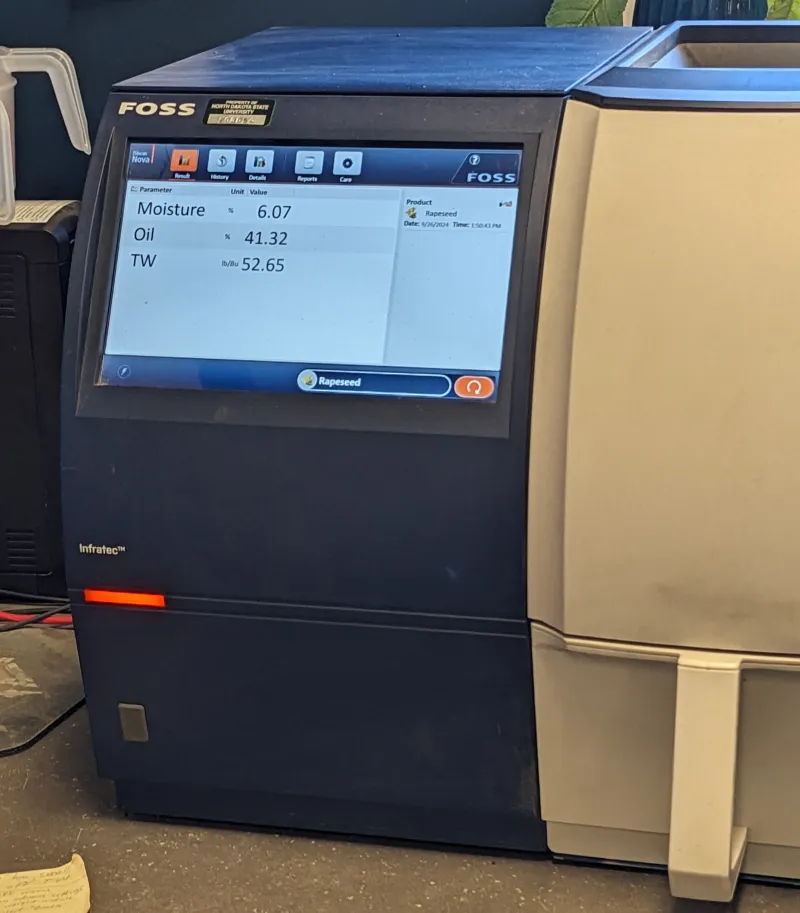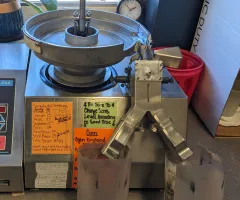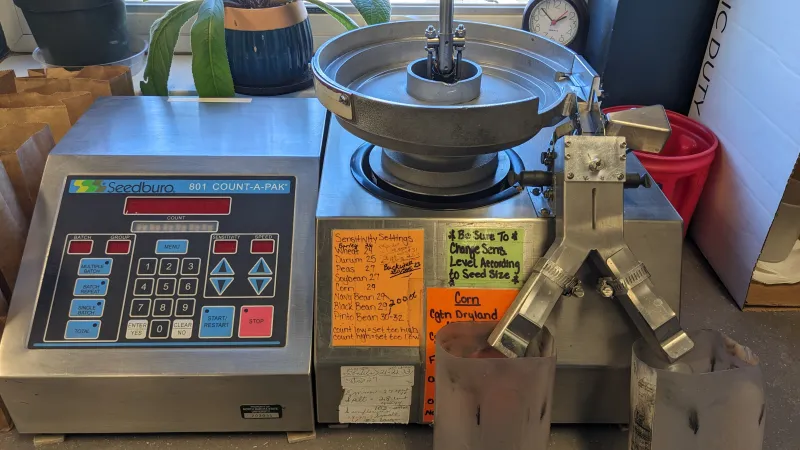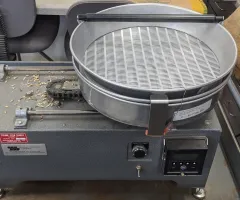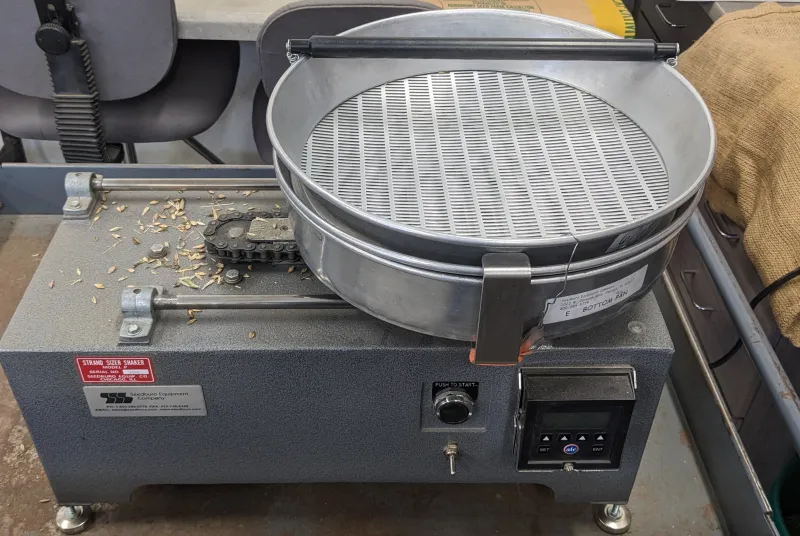Variety Trial Results Coming Soon!
Do you ever wonder why results from the variety trials posted on the NDSU website are not posted immediately after harvest? We’ll follow the steps required to compile harvest and seed data from a single trial, in this case, the spring wheat dryland variety trial.
A bit of background: the spring wheat variety trial consists of 70 different lines with four replications. In other words, each of the 70 lines is planted 4 times, so the trial actually consists of 280 plots. Each individual plot measures 5 feet by 25 feet. Each plot is harvested with a small plot combine, the total yield from each plot is weighed, and a subsample from each plot is maintained a small paper bag for additional processing and measurements.
Each bag is individually dried, cleaned, and passed through a Foss Infratec Near Infrared (NIR) spectroscopic grain analyzer to determine protein content and test weight data. Then 250 seeds from each sample bag are counted (automatically, with a seed counter) and weighed, then multiplied by 4 to generate the 1000-kernel weight. Seed then undergoes additional testing such as measuring seed size, or a sample is packaged to send to another lab for additional quality testing or to determine DON (deoxynivalenol, or vomitoxin) levels.
Doesn’t seem like it would take very long to take one sample through the entire process, does it? Now recall this trial has 280 individual samples that need to undergo the same process and all data needs to be entered into a database. Some of the data is uploaded electronically from the testing equipment, but some statistics are recorded in the field throughout the growing season. The database undergoes statistical analysis and formatting before publication.
The spring wheat dryland variety trial is one of over 150 trials that are completed within the agronomy program at the Carrington REC. That’s a lot of data!
So, for now, a quick preview of the incomplete results from this spring wheat dryland variety trial. MS Charger was the highest yielding line, but yields across the trial ranged from 39 to 86 bushels per acre. AP Gunsmoke CL2 had the highest protein with 18.0%. Now we wait for the 250-seed counts and weights to be completed so the database can be updated, the data analyzed and subsequently published.
Kristin Simons, Ph. D.
Kristin.Simons@ndsu.edu
Research Agronomist
